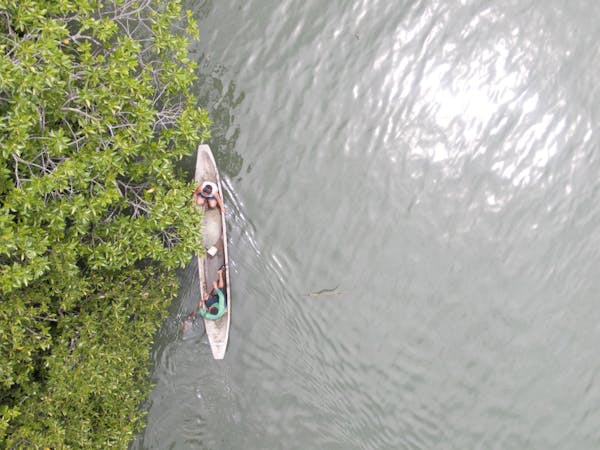Heritiera fomes: mangroves that hold more carbon than terrestrial forests
One Earth's “Species of the Week” series highlights the flagship species of each of the 844 unique ecoregions contained within Earth’s bioregions.
On the coast of the Bay of Bengal, in the northeastern part of the Indian Ocean, where the borders of Bangladesh and India meet, there is a natural barrier that protects the biodiversity, land, and people that thrive in this lush region. It also provides the world with one of the most prominent forms of carbon storage, which aids in mitigating climate change and stabilizing the atmosphere of our planet.
Welcome to the Sundarbans mangroves forest, 140,000 hectares of tropical coastal swampland. One of the most captivating species in this ecosystem isn’t the Bengal tiger, chital deer, wild pig, or even macaque monkey. Rather, it is the tree that all these species rely on for shelter. Heritiera fomes is a specific mangrove tree species and it makes up about 70% of the trees in this area.
_3.jpg)
Known also by its traditional names sunder, sundri, jekanazo, and pinlekanazo, Heritiera fomes is a medium-sized evergreen tree. It can grow to a height of 15 to 25 meters (49 to 82 ft), with a circumference of 2 meters (6 ft 7 in). The trunk is an ashy grey, with growths of moss and vegetation in between its cracks giving a greenish hue. Only a few large branches extend out and from there, small, leathery leaves are gathered at the ends of twigs. Tiny, pinkish-orange flowers bloom into fruit carpels that ripen between June and August and germinate after falling to the ground.
A wide variety of wildlife lives and breeds within the mangrove ecosystem of Heritiera fomes, including numerous fish, mammal species, and an array of nesting birds. This stretch of sunken trees also acts as a natural coastal defense against violent storm surges and floods. Sediments are trapped by the roots of the Heritiera fomes which slows erosion and protects the environment as well as the coastal communities living in the area. Heritiera fomes also is a primary example of Blue Carbon.
Research shows that coastal mangroves outperform terrestrial forests in their capacity to hold greenhouse gases, storing up to four times more CO2 than other tropical rainforests.

Heritiera fomes is the flagship species of the Sundarbans Mangroves ecoregion, located in the North Indian Tropical Forests & Sundarbans bioregion (IM6).
With such an essential role to play in our shared planet, it is vital to protect Heritiera fomes and the forest in which it creates and lives. Unfortunately, the International Union for Conservation of Nature has placed this mangrove tree in endangered status. Coastal development, rice farming, shrimp ponds, and oil palm plantations have led to its decline. Several protected areas of the forest have been created in both India and Bangladesh in response to the crisis.
This ecosystem was also declared a UNESCO World Heritage Site and is now one of the World’s Natural Wonders.
Interested in learning more about the bioregions of Indomayala? Use One Earth's interactive Navigator to explore bioregions around the world.
Launch Bioregion Navigator_1.jpg?auto=compress%2Cformat&w=1440)




